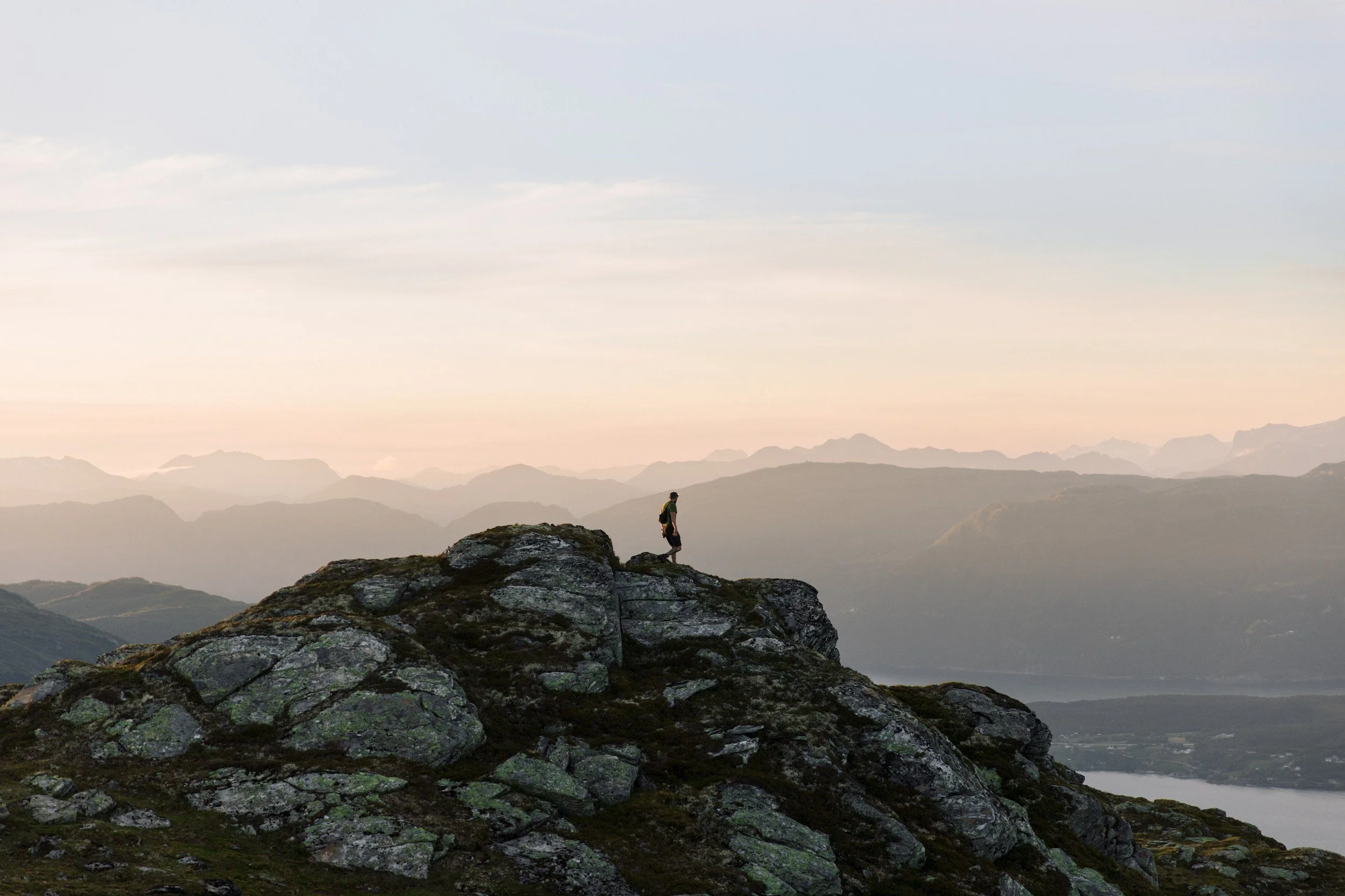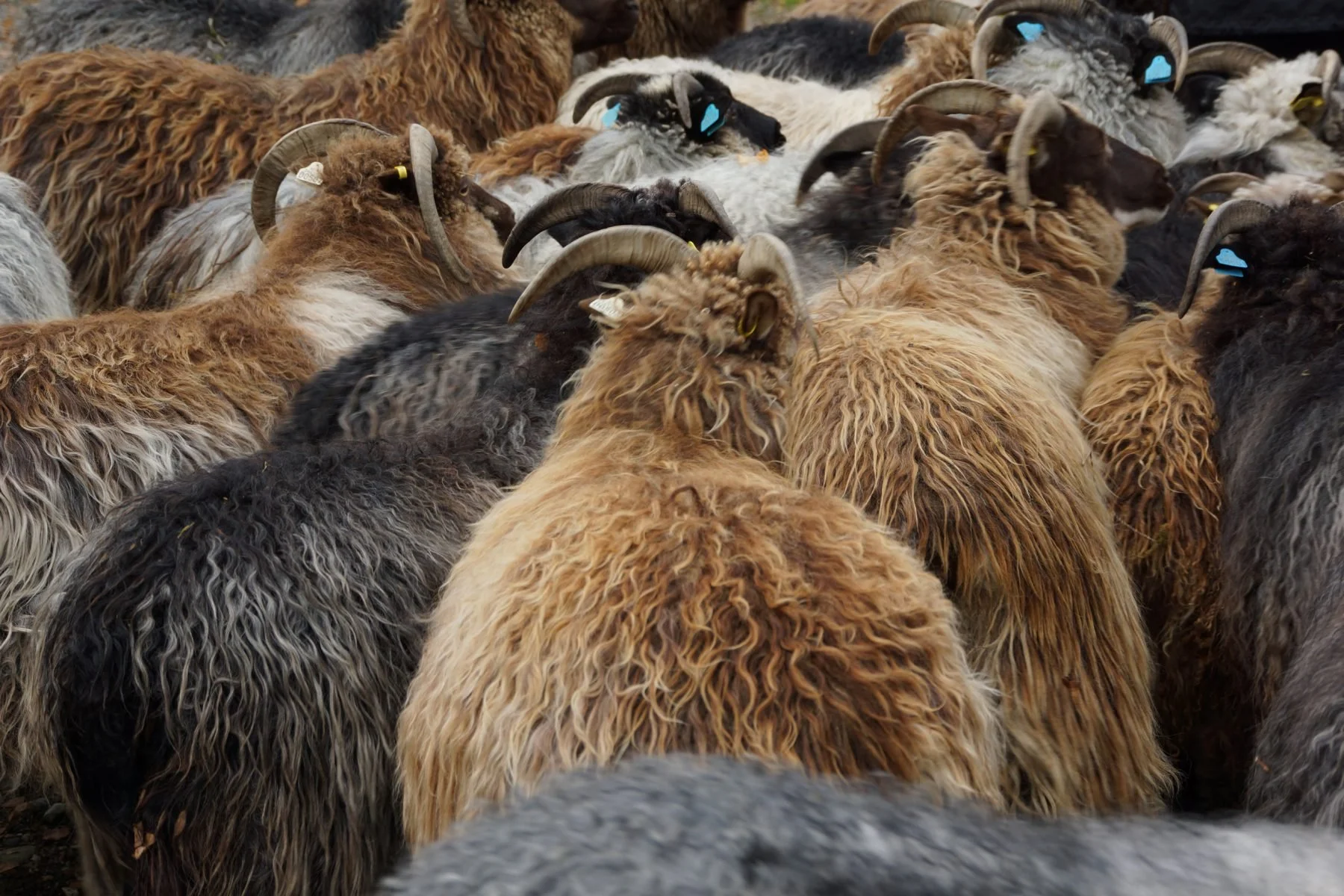The Architect
My name is Annemieke, and I am the owner and architect of flock & mountain. I have always been fascinated by nature, and especially by farming. As a child, we often visited my grandparents' cabin, and I loved spending time in the woods and fields. I enjoyed bonding with the animals on the surrounding farms, especially the sheep. Being out among the animals gave me great joy, and I felt peaceful.
In my work as an architect, I am aware that this feeling of peace and joy is known as biophilia - the understanding of how humans are deeply connected to nature, and how this connection affects various aspects of our lives. Research shows that this affects health, well-being and creativity, among other things. By incorporating materials like wool into architectural projects, people will feel better and work better.
At flokk & fjell we use wool in its purest form, with minimal processing, and with colors from plant dyes. Read more about the sheep, Norwegian nature, the plant dyes and the process further down.
The sheep
These sheep, owned by local farmers, produce the wool used in our textiles. They spend the summer in the mountains and move closer to the farm in the winter. Although they have access to the stable, they prefer to be outside even in cold weather and heavy snow. They are well adapted to the climate and can eat whatever is available, including tree bark.
We mainly use wool from two traditional sheep breeds found in Norway - Gammalnorsk Spælsau and Norsk Pelssau. Each breed has distinct and unique characteristics.
The Gammalnorsk Spælsau is an ancient and strong breed known for its robustness in Norway’s harsh and challenging landscape. They have a short tail and a variety of wool colors, and both rams and ewes have horns. These sheep are well adapted to grazing in mountainous and coastal areas, finding food even in harsh conditions. Their coarse, double-layered wool keeps them warm and protects them from the cold.
The fur sheep, on the other hand, is highly valued for its shiny, thick fur. It is mostly used for high-quality fur and wool products. These sheep have been bred for many years and have become accustomed to the Norwegian weather.
Both types of sheep have been very important in Norwegian agricultural history. They show how diverse and strong sheep farming has been, both in the past and now.
The landscape
In the Vestland region of Norway, ancient sheep breeds such as the Old Norwegian Spælsau and Norwegian Fur Sheep have roamed freely in the rugged landscape for centuries.
Sheep play a crucial role in shaping the landscape, and their grazing habits help control vegetation growth and prevent the overgrowth of certain plant species. This in turn helps preserve biodiversity and the unique character of Western Norway.
Their presence is a testament to the strength of Norwegian culture and the enduring bond between people and nature.
In the mountains around Sandane there are several places called "støyl", a mountain farm that is primarily used for sheep farming. The barn in the picture is called Gimmestadstøyl. On the rocks here grows some of the lichen Steinlav, which we use for dyeing.
In the past, stilts had several important functions:
Summer grazing area: The animals were moved to higher mountain areas in the summer to take advantage of the grazing resources, while the lowland areas could be used for other purposes or left undisturbed.
Milk production: Some huts also functioned as mountain dairies, where milk was produced. The milk was used to make dairy products such as cheese and butter.
Counting and caring for sheep: Sheepfolds served as places for counting and caring for sheep. This was important to ensure that all the sheep were present and in good health.
Meeting places: Sheepfolds also served as meeting places for cooperating sheep owners, where they could exchange knowledge and help each other care for their flocks.
Social events: Stalls were also used for social events. These could be celebrations, marking important events, or an opportunity for sheep owners to gather socially.
The colors
At flokk & fjell we have handpicked the finest natural plant dyes from Norway and the rest of the world to give you a kaleidoscope of organic colors. It is natural for us to choose the color pigments nature gives us, not only to honor the beautiful wool , but also to respect and preserve the environment :
Eco-friendly : With a greater focus on environmental impact, using natural plant dyes is a conscious choice. Unlike synthetic alternatives, dyes come from sustainable sources, leaving a smaller carbon footprint.
Connecting with Nature : Working with natural plant dyes builds a bridge between creativity and nature. Each batch of dyes carries the essence of the earth, connecting you to ancient traditions and the beauty of the planet's resources.
Unique colors : Natural plant dyes provide a fantastic range of colors that cannot be created with synthetic dyes. Warm orange-brown colors from the Norwegian lichen Steinlav, soothing blue tones from indigo leaves and luminous yellow colors from the leaves of the many birch trees in Norway - a beautiful journey in unlimited colors.
Distinctive Results : One of the most remarkable aspects of natural plant dyes is their ability to produce unique results. Each dye batch produces variations in the pigment, ensuring that each of our creations becomes an individual work of art.
The process
At flokk & fjell we get our wool directly from local farmers, who shear their sheep once or twice a year. When the wool arrives at our workshop, we first sort and clean it. The finest wool is used in the textiles, while the remaining wool is used for insulation mats that are integrated into the frames and other wall installations.
Depending on the project, the wool is carded and dyed. We card by hand on small carding mills to ensure that the wool is not over-carded. We want to preserve the structure of the wool in the textiles, and avoid over-carding which would make both the wool and the textiles smoother and less structured and tactile.
The dyeing process can take place before or after the wool is carded, depending on the project. We have a dye kitchen in our workshop in Sandane, where we use our own recipes that we have developed over the past 15 years.
Our dyes come from lichens and plants, specifically leaves, flowers, stems or roots. This approach not only reflects our commitment to environmentally conscious choices, but also infuses our products with natural colors inspired by the rich landscapes of Norway.
After the preparations are complete, we place the layers of wool on the table where we felt the wool. The textiles need to be strong, so we place the wool in different directions to ensure a good construction. Felting wool involves applying moisture, heat and friction to natural wool fibers. The microscopic scales on the wool fibers interlock under these conditions, creating a dense, tangled fabric called felt. Because of this process, the wool from the back layer becomes visible on the front, a factor we take into account when designing and planning production.
After felting, the wool felt textile is rinsed and hung up to dry.









